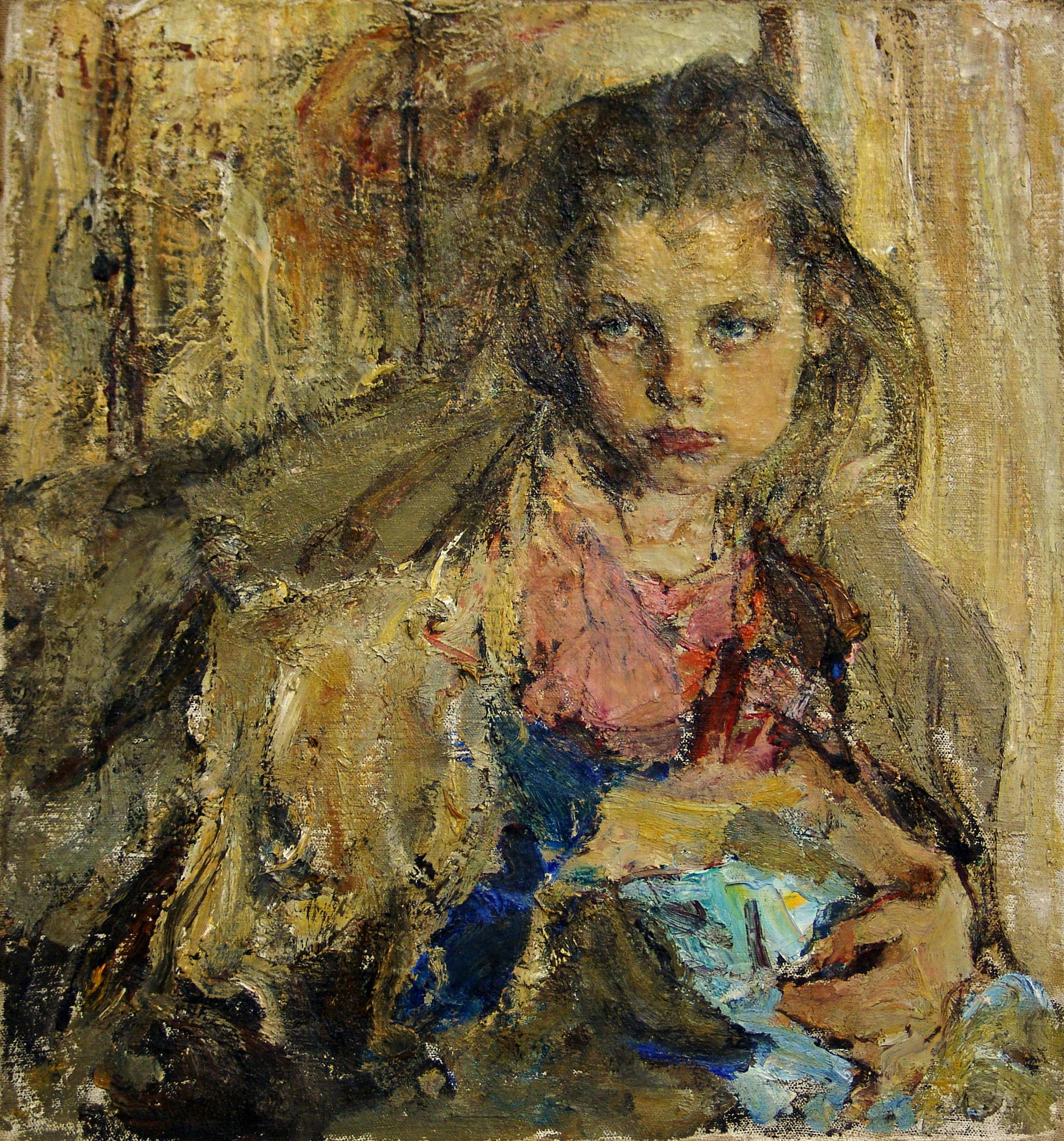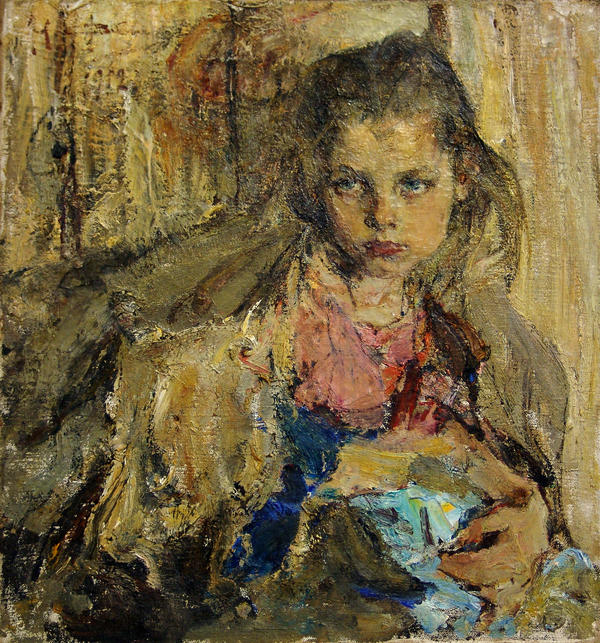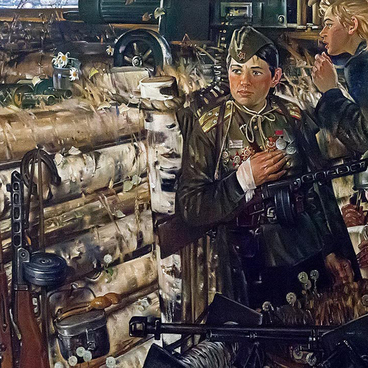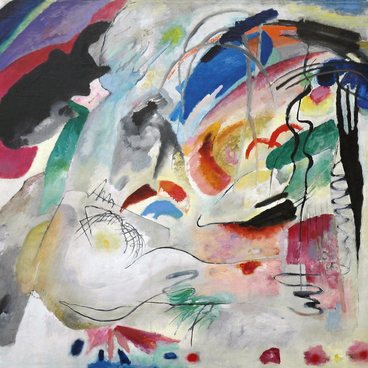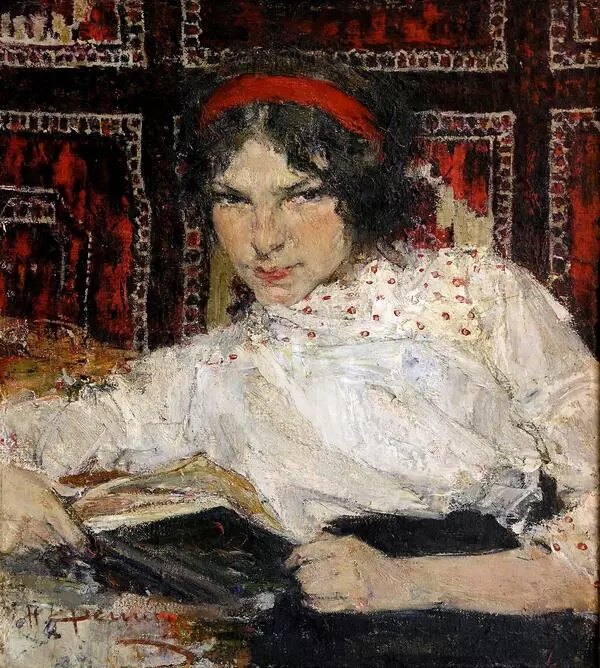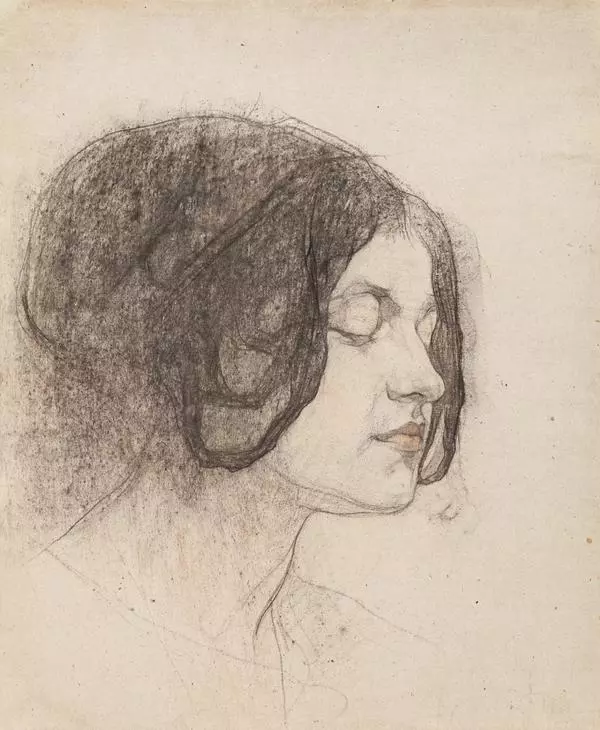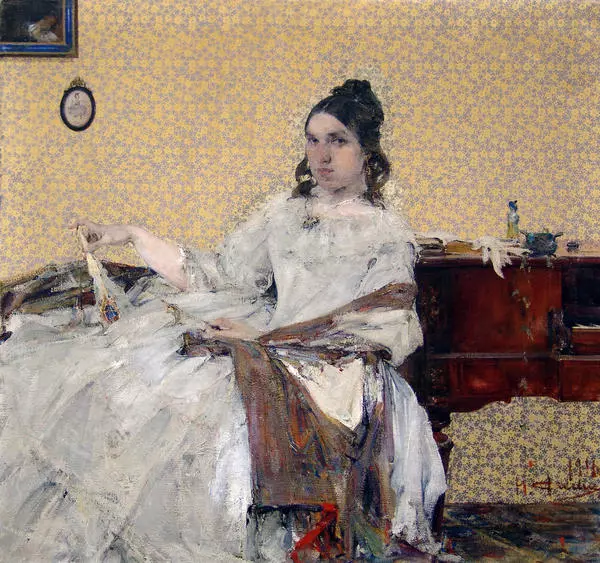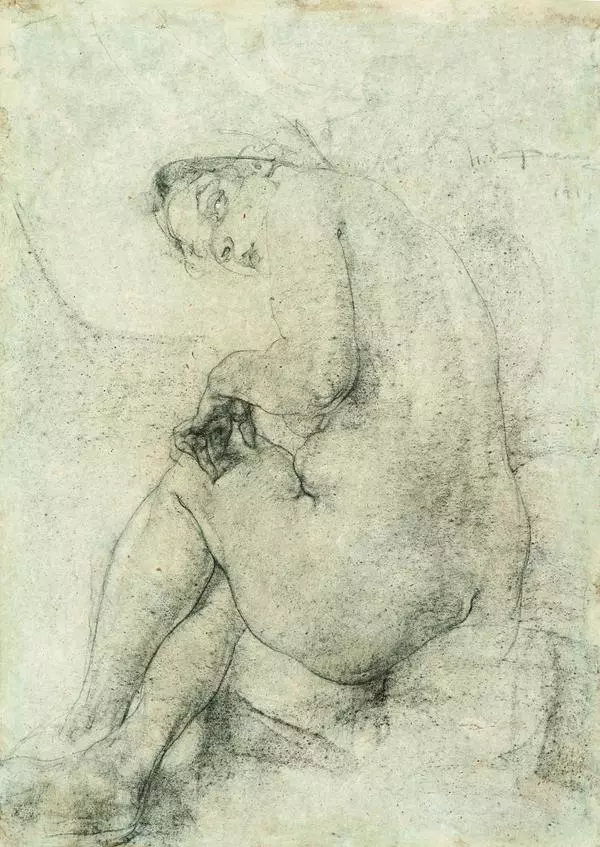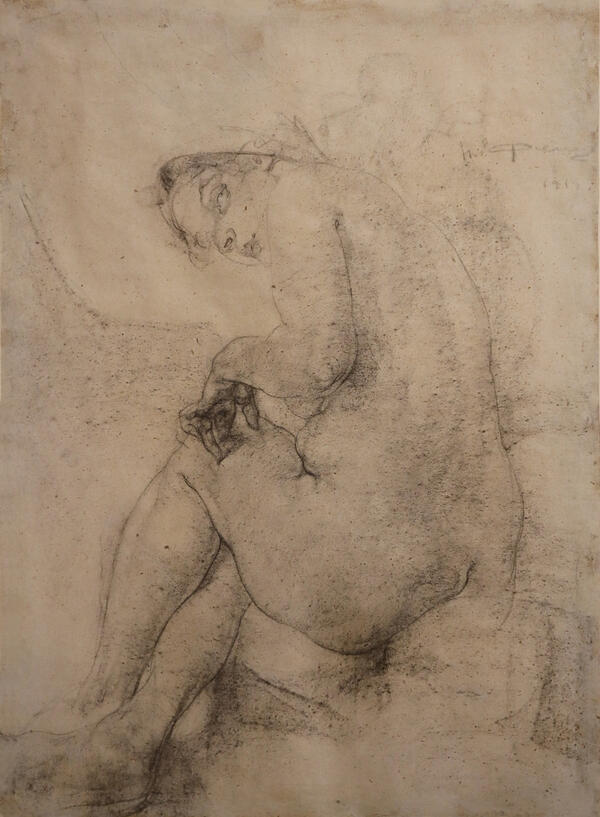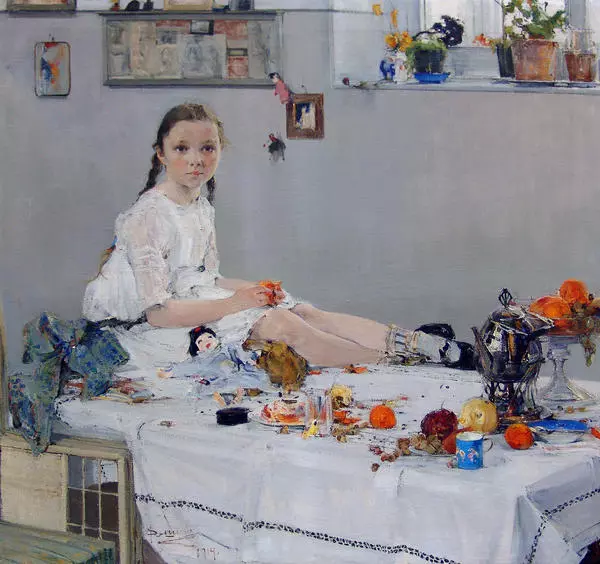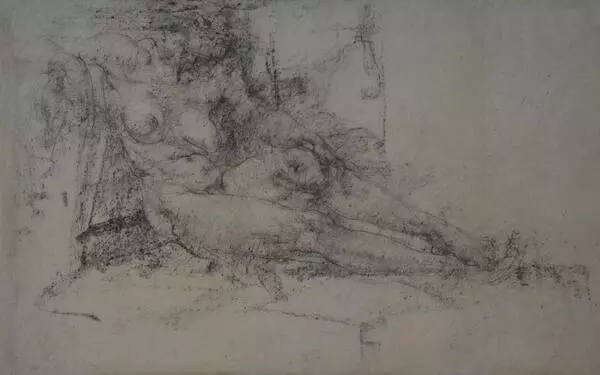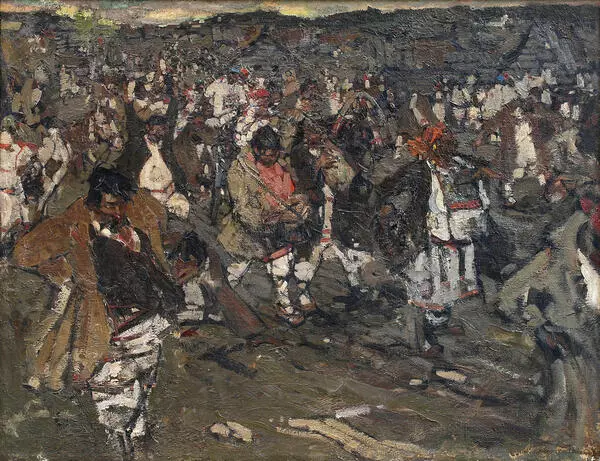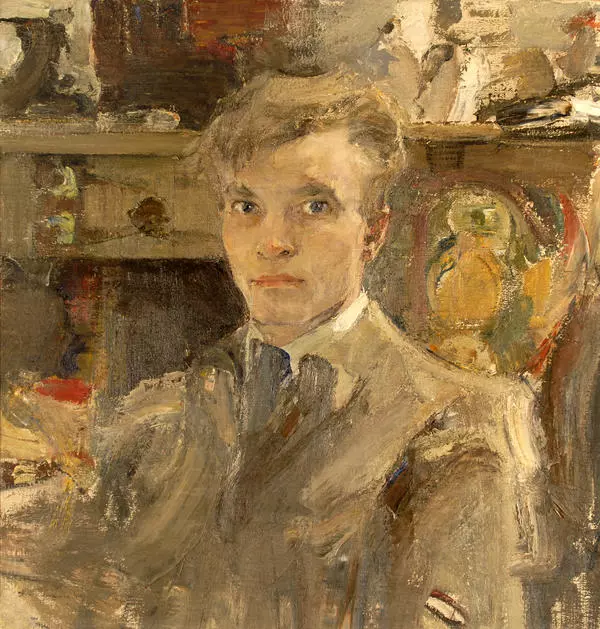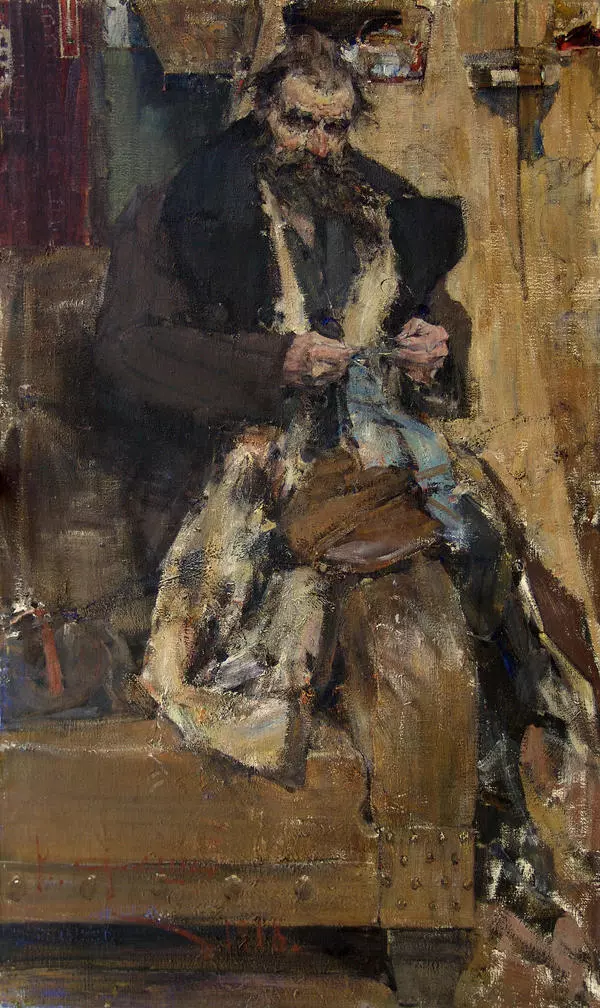The key feature of Katenka’s Portrait is the character’s unusually big light blue eyes. The girl wrapped in a shapeless shawl is holding a toy tight with her hand. The child’s tender face is exquisitely elaborate and forms a single color spot with ocher brown background. The painting suggests that Nickolay Feshin was fascinated by impressionism, which is seen in every brushstroke, vibrant and sweeping.
Though clearly influenced by impressionism, Nickolay Feshin started as a realist painter. In 1901 he entered the Imperial Academy of Arts in St. Petersburg and began studies under Ilya Repin. Nickolay made good progress – as early as in the first year he received an award from the Academy’s Council for a sketch entitled Coming out of the Catacombs. When a student, Nickolay Feshin made annual holiday trips around Russia in order to ‘paint from nature’.
In 1907 Ilya Repin voluntarily left the Academy. Nickolay Feshin perceived it as a big loss and was one of the 50 students who approached their teacher with a letter requesting him to stay. But right after Repin’s retirement Nickolay established himself as an artist. The painter started experimenting – invented his own gelatin coating to replace fabricated oil ground, used just a limited color palette and eventually developed a personal artistic style.
In 1916 Nickolay Feshin was accepted as a member of the Itinerants’ movement (‘Peredvizhniki’). The artist participated in their exhibitions, but still did not fully associate himself with that union. As well as the Itinerants he was interested in people’s life, but never laid emphasis on social problems in his works.
The painting was created in 1912, when Nickolay Feshin lived in his native city of Kazan and mainly drew the portraits of close people, especially the children. One of the artist’s major works belonging to that period is Portrait of Varya Adoratskaya, which also highlights the serious look in a child’s eyes. An important feature of the canvas is the room interior, which is thoroughly elaborate, while in Katenka’s Portrait the artist ignores the particulars of clothes and furnishing and focuses just on his character’s face.
Though clearly influenced by impressionism, Nickolay Feshin started as a realist painter. In 1901 he entered the Imperial Academy of Arts in St. Petersburg and began studies under Ilya Repin. Nickolay made good progress – as early as in the first year he received an award from the Academy’s Council for a sketch entitled Coming out of the Catacombs. When a student, Nickolay Feshin made annual holiday trips around Russia in order to ‘paint from nature’.
In 1907 Ilya Repin voluntarily left the Academy. Nickolay Feshin perceived it as a big loss and was one of the 50 students who approached their teacher with a letter requesting him to stay. But right after Repin’s retirement Nickolay established himself as an artist. The painter started experimenting – invented his own gelatin coating to replace fabricated oil ground, used just a limited color palette and eventually developed a personal artistic style.
In 1916 Nickolay Feshin was accepted as a member of the Itinerants’ movement (‘Peredvizhniki’). The artist participated in their exhibitions, but still did not fully associate himself with that union. As well as the Itinerants he was interested in people’s life, but never laid emphasis on social problems in his works.
The painting was created in 1912, when Nickolay Feshin lived in his native city of Kazan and mainly drew the portraits of close people, especially the children. One of the artist’s major works belonging to that period is Portrait of Varya Adoratskaya, which also highlights the serious look in a child’s eyes. An important feature of the canvas is the room interior, which is thoroughly elaborate, while in Katenka’s Portrait the artist ignores the particulars of clothes and furnishing and focuses just on his character’s face.
